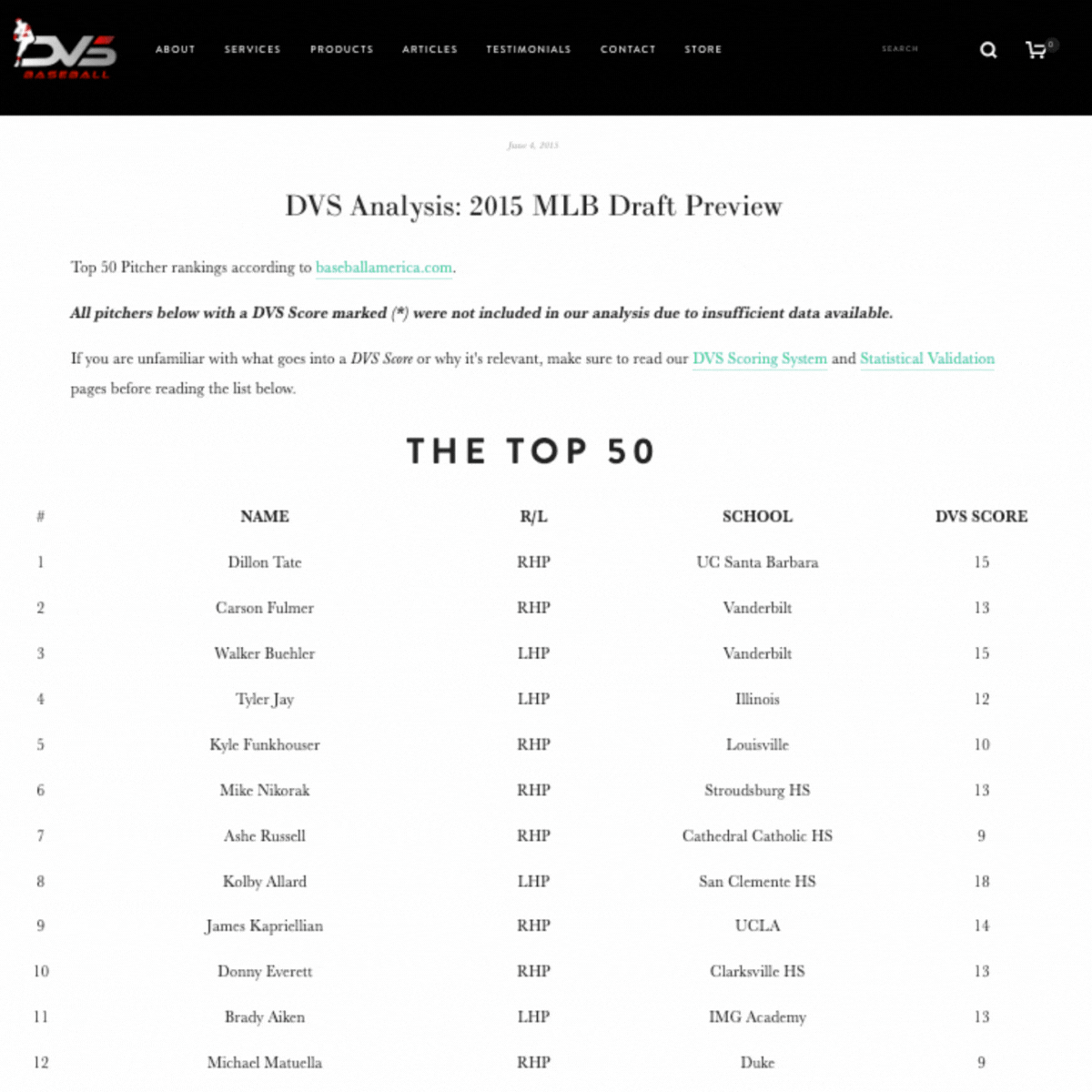Kolby Allard's DVS Score: A Future Perspective for MLB Pitching Mechanics
On June 4th, 2015, I published the DVS Scores for the Top 50 Draft Eligible Pitchers in anticipation of the 2015 MLB Amateur Draft.
Kolby Allard emerged with the highest DVS Score at 18, making him a standout among his peers. At that time, our Injury Risk Model had just been finalized, prompting us to conduct a preliminary analysis on the top amateur pitchers using this innovative tool. Nearly a decade later, it is intriguing to observe certain correlations. In a subsequent update last summer, I presented statistics from the 2015 MLB Draft cohort:
Out of 41 pitchers, 22 (53%) underwent surgery on their throwing arm.
14 are no longer active in professional baseball.
5 pitchers underwent Tommy John Surgery before even throwing their first pitch.
The DVS Scores assigned to each pitcher served as a snapshot of their mechanics before the draft. While many DVS Scores have evolved over the years, the changes have not been substantial.
In the present day, I have revisited our Injury Risk Model and updated Kolby Allard's profile. What stands out about Allard is not only his initial highest DVS Score but also the fact that, among all pitchers, he has thrown the second-highest number of innings (856), surpassed only by Jake Woodford, whose DVS Score was 16, and has logged 897 professional innings.
In terms of injuries, both Allard and Woodford experienced their first arm-related injury in 2023.
Among the Top 12 pitchers featured in the accompanying image, 6 have undergone Tommy John Surgery, with an average DVS Score of 12.13.
Moving forward, we have expanded our capabilities to calculate the DVS Score for every pitch thrown by MLB pitchers. Our commitment remains unwavering as we continue to provide valuable insights to all levels of baseball.

